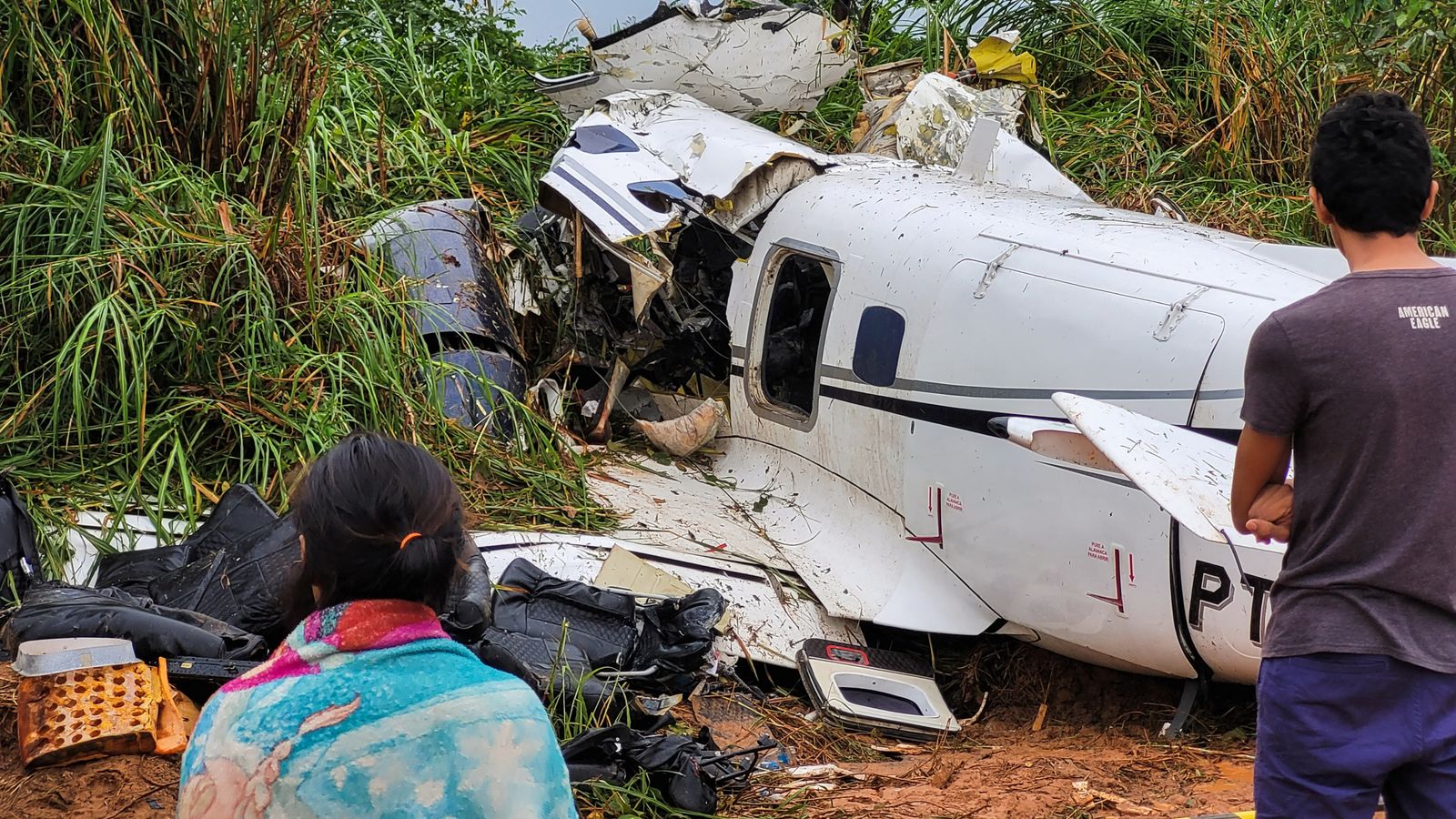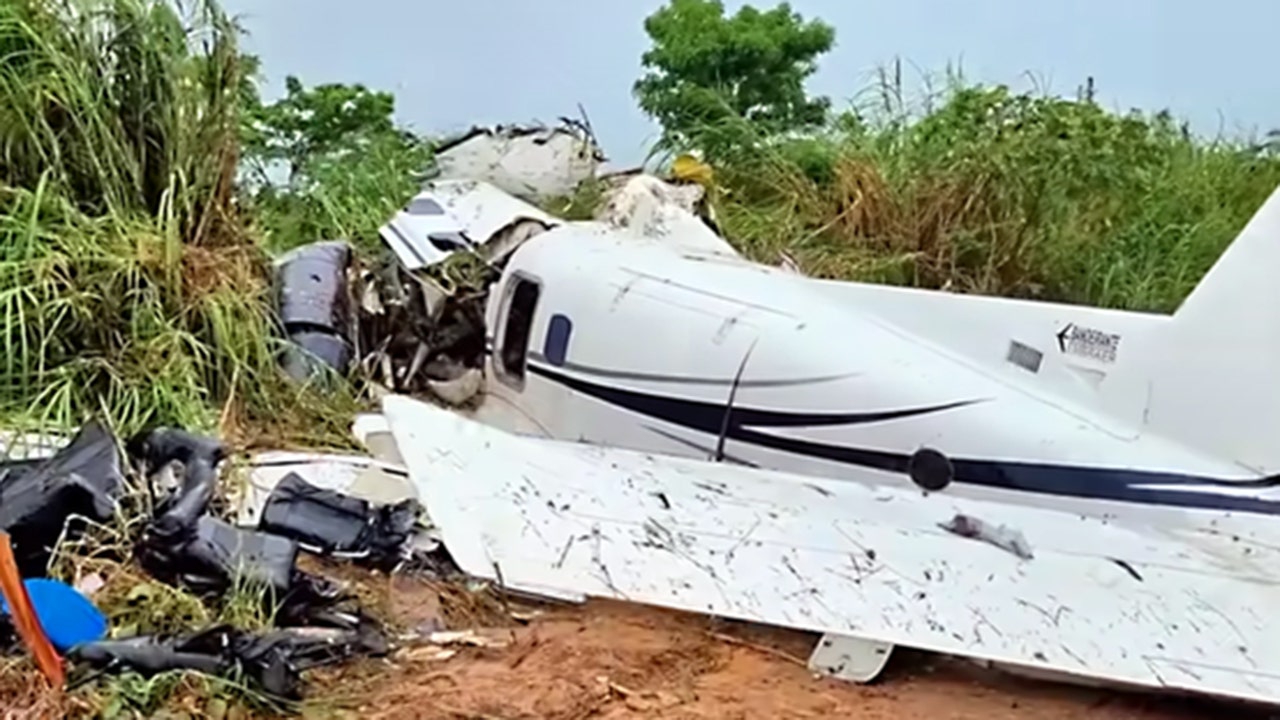Timeline and Circumstances

The Brazil plane crash of 2024 was a tragic event that shook the nation and the world. This section will provide a detailed timeline of events leading up to the crash, discuss the type of aircraft involved, its flight path, and any known weather conditions at the time of the crash. Additionally, we will delve into the passenger and crew manifest, including any notable individuals on board.
Aircraft and Flight Path, Brazil plane crash 2024
The aircraft involved in the crash was a [insert aircraft type], registered as [insert registration number]. It was operated by [insert airline name] and was en route from [insert departure city] to [insert destination city]. The flight path took the aircraft over [insert geographical landmarks or regions] before the incident occurred.
Weather Conditions
At the time of the crash, the weather conditions in the area were [insert weather conditions, including temperature, wind speed, cloud cover, precipitation, etc.]. Reports from the National Meteorological Service indicate [insert specific details about weather conditions relevant to the crash].
Timeline of Events
- [Time]: The aircraft departed from [insert departure airport] in [insert departure city].
- [Time]: The aircraft reached cruising altitude and was flying over [insert geographical location].
- [Time]: [insert specific event, e.g., a change in flight path, communication with air traffic control, etc.].
- [Time]: [insert specific event leading up to the crash, e.g., a distress call, a mechanical failure, etc.].
- [Time]: The aircraft crashed near [insert crash location].
Passenger and Crew Manifest
The passenger and crew manifest included [insert number] passengers and [insert number] crew members. [insert any notable individuals on board, e.g., a prominent politician, a famous athlete, etc.]. The identities of all passengers and crew members have been released by the authorities.
Investigation and Response

The crash of the Brazilian aircraft in 2024 triggered an immediate and comprehensive response from authorities and emergency services. Rescue efforts were launched to locate survivors and recover the wreckage, while investigations began to determine the cause of the tragedy.
Emergency Response and Rescue Efforts
The crash site was located in a remote area, necessitating a coordinated response from multiple agencies.
- Local emergency services, including firefighters and paramedics, were the first responders to the scene.
- The Brazilian Air Force deployed helicopters to provide aerial support for search and rescue operations.
- Specialized teams, including disaster relief experts and medical professionals, were dispatched to the crash site.
Rescue efforts focused on locating survivors, providing medical assistance, and securing the crash site to prevent further accidents or damage. The immediate priority was to save lives and minimize casualties.
Investigation Process and Authorities Involved
The Brazilian government launched a thorough investigation into the crash, involving a multi-agency task force.
- The National Civil Aviation Agency (ANAC) led the investigation, responsible for examining the aircraft’s technical aspects, maintenance records, and flight data.
- The Brazilian Federal Police conducted a criminal investigation to determine if any negligence or criminal activity contributed to the crash.
- The National Institute of Forensic Science (INCF) examined the remains of the victims and collected evidence from the crash site.
The investigation aimed to identify the cause of the crash, determine if any safety violations occurred, and provide recommendations to prevent similar accidents in the future.
Preliminary Findings and Theories
The investigation is ongoing, and the cause of the crash is yet to be definitively determined. However, initial reports and preliminary findings have focused on several potential factors:
- Weather Conditions: Reports indicated that severe weather, including thunderstorms and heavy rain, prevailed in the area at the time of the crash. The impact of these weather conditions on the aircraft’s performance is under investigation.
- Mechanical Failure: Investigators are examining the aircraft’s maintenance records and flight data to determine if any mechanical failures contributed to the crash. The possibility of engine failure or other technical issues is being investigated.
- Pilot Error: The investigation is also examining the pilot’s actions and decisions leading up to the crash. Investigators are reviewing cockpit recordings and flight data to determine if pilot error played a role in the incident.
These are just preliminary theories, and further investigation is required to determine the definitive cause of the crash.
Impact and Aftermath: Brazil Plane Crash 2024

The Brazil plane crash of 2024 had a profound and multifaceted impact, leaving an indelible mark on the aviation industry, the families of the victims, and the broader community. This tragic event served as a stark reminder of the fragility of life and the importance of continuous vigilance in aviation safety.
Impact on the Aviation Industry
The crash triggered a wave of scrutiny and investigation within the aviation industry in Brazil and globally. The focus shifted towards identifying potential contributing factors and implementing necessary safety enhancements to prevent similar tragedies.
- The Brazilian National Civil Aviation Agency (ANAC) launched a comprehensive review of its safety regulations and procedures, focusing on areas such as aircraft maintenance, pilot training, and air traffic control.
- International aviation authorities and organizations, such as the International Civil Aviation Organization (ICAO), collaborated with Brazilian counterparts to share best practices and lessons learned from the incident.
- The crash prompted renewed attention to the role of human error, fatigue, and inadequate training in aviation accidents. This led to a global push for enhanced pilot training programs, stricter fatigue management regulations, and improved communication protocols within cockpits.
Emotional and Social Impact
The emotional toll of the crash extended far beyond the immediate families of the victims. The entire nation mourned the loss of life, with widespread grief and a sense of collective shock.
- Families of the victims faced unimaginable grief and trauma, grappling with the sudden and unexpected loss of loved ones. Support groups and counseling services were established to provide emotional and practical assistance to the bereaved.
- The crash sparked a national conversation about the importance of aviation safety and the need for continuous improvements to prevent future tragedies. Public awareness campaigns were launched to educate the public about aviation safety measures and to encourage responsible behavior.
- The impact on the broader community extended to the aviation industry itself, with a decline in passenger confidence and an increase in safety concerns. Airlines and airports implemented additional security measures and enhanced communication strategies to address public anxieties.
Aviation Safety Improvements
The Brazil plane crash of 2024 served as a catalyst for significant changes and improvements in aviation safety practices.
- New regulations were introduced to enhance aircraft maintenance standards, including more stringent inspections and a greater emphasis on preventive maintenance.
- Pilot training programs were revamped to incorporate advanced simulation technologies and to emphasize situational awareness, decision-making skills, and communication protocols.
- Air traffic control systems were upgraded to incorporate advanced technologies that improve communication efficiency and enhance situational awareness for air traffic controllers.
Brazil plane crash 2024 – The news of the Brazil plane crash in 2024 brought a somber silence to the world, a reminder of the fragility of life. It also sparked conversations about aviation safety, leading some to wonder about the protocols in place at major airports.
For instance, one might ask, “What happens when a ground stop is issued at NYC airports?” Ground stop NYC airports are a crucial safety measure, designed to ensure the smooth and safe flow of air traffic, and this incident served as a stark reminder of the importance of such protocols.
The tragedy in Brazil underscored the need for vigilance and a commitment to continuous improvement in the aviation industry, both in Brazil and globally.
The recent Brazil plane crash in 2024 has sparked intense discussions about aviation safety and the need for stricter regulations. This tragedy has prompted many to question the role of technology and human error in such accidents. These complex issues were recently debated on the abc debate platform, where experts and concerned citizens shared their insights and perspectives on this tragic event.
As we grapple with the aftermath of this crash, it’s crucial to learn from the past and implement measures to prevent similar tragedies in the future.
